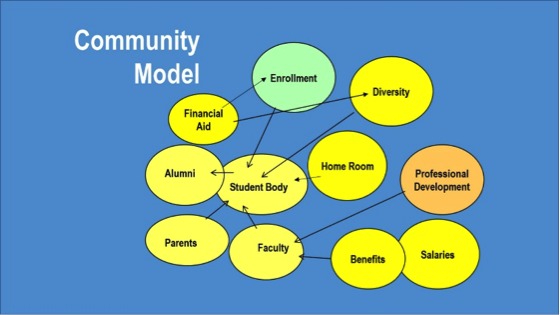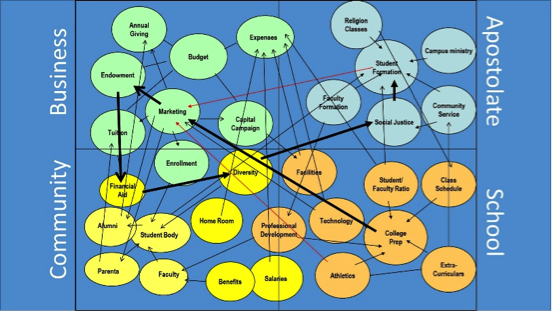Jack Peterson, Managing for Mission
August 9, 2017
If you’re the administrator or trustee of a faith-based school, you have a tough job. Saying our schools are complex organizations doesn’t make it any easier. But it would be helpful to have a framework that brings greater clarity to what we’re doing—both for ourselves and the people we lead.
Every business knows that to succeed it needs an effective business model, and faith-based schools have learned that they do too. But they also need more. In fact, faith-based schools need to manage four different models at work in their school. Each model must be functional in itself and must support the function of the other three.
Let’s take a closer look:
As religion teachers and campus ministers will be happy to remind you, faith formation is at the core of our schools’ mission. It’s what makes us special. But it doesn’t happen by accident. We need to orchestrate a number of activities: To provide spiritual formation to our staff, build religion classes into the curriculum, develop a campus ministry program, service opportunities, and a way to tie our spiritual values to actions for social justice. All these components and others need to be organized into an effective strategy for engendering faith in our students. So we can say we have an Apostolic Model. A rudimentary representation might look like this:

But we’re schools, and as such, we need to prepare students for success in college and later life. To do this we need a college prep curriculum (even if we’re k-8, by the way). We need to put in place professional development, technology and facilities that support that curriculum. To pay attention to our student-teacher ratio and design an effective class schedule. We even need to consider how extra-curriculars like athletics support our pedagogy. Coordinating all this requires thought and skill, and so we can say, we must have a Pedagogical Model.

But anyone who works in a faith-based school knows that learning happens only in a nurturing environment, a fabric of relationships that supports the student in her growth. Again, this doesn’t happen by accident.
Having a strong community means attracting a committed and diverse student body. It means having skilled faculty who must be supported with professional development, appropriate salaries and benefits. But faith-based schools also need a wider “cloud of witnesses” that support the students, which includes parents and graduates, who are now alumni. Creating a healthy learning community is an intentional act and our strategy for doing so can be called our Community Model.

We don’t usually think of our schools as businesses, but like any business we live with the uncompromising reality that our revenues have to exceed our expenditures. We need to run on a budget, which requires, first of all, a healthy enrollment and tuition revenues, but our schools also require philanthropic support, from annual giving, events and endowment. And we also need to raise money through capital campaigns to provide the needed facilities. This all has to work, year in and year out, so, like any business we need a functioning Business Model.

Clearly for our schools to survive and flourish, each one of the models, our Apostolic, Pedagogical, Community and Business models, have to be well-managed. But here’s the challenge: not only does each have to be functional in itself, they also have to support each other. Most of the people in our schools live in one or another of these models, and may not even be sure why we need the other models, or whether they’re that important. But if you’re a trustee or a chief administrator of a faith-based school, your job is to unite them all into one overall model for an effective school.

As I say, you’ve got a tough job. Managing for mission is the process of aligning all the elements of the four models so that like oarsmen in a racing shell, they all pull together toward the school’s mission. We use tools like strategic planning, appropriate governance models, spirit inspired discernment, thoughtful human resource practices, communications and institutional advancement to achieve this alignment. More can be learned about these tools by exploring the resources on this website, www.managingformission.com.
If you’d like to see a visual presentation of this explanation of the Four Models in a Faith-based School, or use it to share with others in your school, go back to the top of this post and click on the video link.
And thanks for all you do to support faith based education. Keep up your good work on behalf of God’s beloved children.
More information on how boards can best carry out their crucial role is available several places on this website, www.managingformission.com
